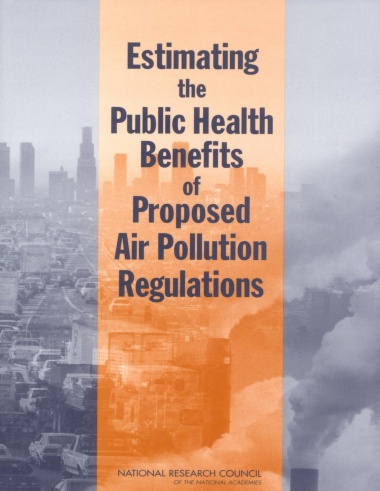EPA estimates that thousands of premature deaths and cases of illnesses may be avoided by reducing air pollution. At the request of Congress, this report reviews the scientific basis of EPA's methods used in estimating the public health benefits from its air pollution regulations.
- Cover
- Front Matter
- Summary
- 1 Introduction
- 2 Health Benefits Analyses: EPA Case Studies
- 3 Framing the Analysis
- 4 Exposure and Response
- 5 Uncertainty
- 6 Using, Presenting, and Reviewing Health Benefits Analyses
- Appendix: Biographical Information on the Committee on Estimating the Health-Risk-Reduction Benefits of Proposed Air Pollution Regulations

